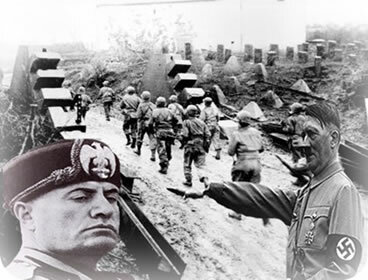One of the most interesting ways of studying history is through the analysis of the artistic production of each historical period or period. Made since the dawn of humanity, with cave paintings, the historical analysis of art allows the observation of countless elements necessary for understanding past societies and human groups that conventional historical documents do not behave.
In the case of prehistory, the lack of written records imposes on cave paintings an enormous importance in the analysis of the perception that those people had about their lives. The artistic expression of that time shows that men from the beginning were not content only with the material production of their lives. It was also necessary to produce the iconographic interpretation to express the understanding they held about their ways of life.
The analysis of works of art also allows us to understand the behavior and desires of the artists who produced them, enabling, through individual positions, to enter universes of behavior and collective desires of past societies. The reproduction of everyday scenes through paintings and pictures, for example, gives deeper dimensions to the small everyday things that we could hardly know just by reading a book based only on documents writings.
With the analysis of artistic techniques and the materials used, it is possible to see the material development of a given civilization, such as knowledge on chemical mixtures, in the case of paints, or the development of tools to carry out the work of paintings, sculptures and instruments musicals.
Do not stop now... There's more after the advertising ;)
In the case of techniques, it is still possible to notice major breaks with previous periods, as in the case of the European Cultural Renaissance during the Modern Age. The use of scientific knowledge that was under development allowed a new way of artistic production, ranging from painting to architecture, in contrast to artistic conception medieval.
In this case, the rupture was also one of understanding the world, importing a different interpretation of the world and the universe, breaking with the Christian philosophical conception, placing the human being at the center of the production of knowledge, thus influencing countless transformations later.
The historical study of the arts also makes it possible to perceive aesthetic conceptions that change over time and how they are shared by different artists in the same period. The comparison of Greek, Egyptian, medieval and modern aesthetic production, for example, reveals great differences related to the characteristics of each of these historical periods.
With the study of the arts, even the repressive aspects of societies are brought to light. The obligation of an art turned to religion or even to the cult of certain leaders, as in the case of Stalinism, shows the level of freedom that societies have. The censorship of musical lyrics during the military dictatorship in Brazil is also one of those cases of restriction of artistic production as an element of contesting social orders.
These are a few ways to realize the potential of combining the analysis of artistic productions with the historiographical study.
By Tales Pinto
Graduated in History
Would you like to reference this text in a school or academic work? Look:
PINTO, Tales of the Saints. "Art and History in the Study of Societies"; Brazil School. Available in: https://brasilescola.uol.com.br/historiag/arte-historia.htm. Accessed on June 27, 2021.


